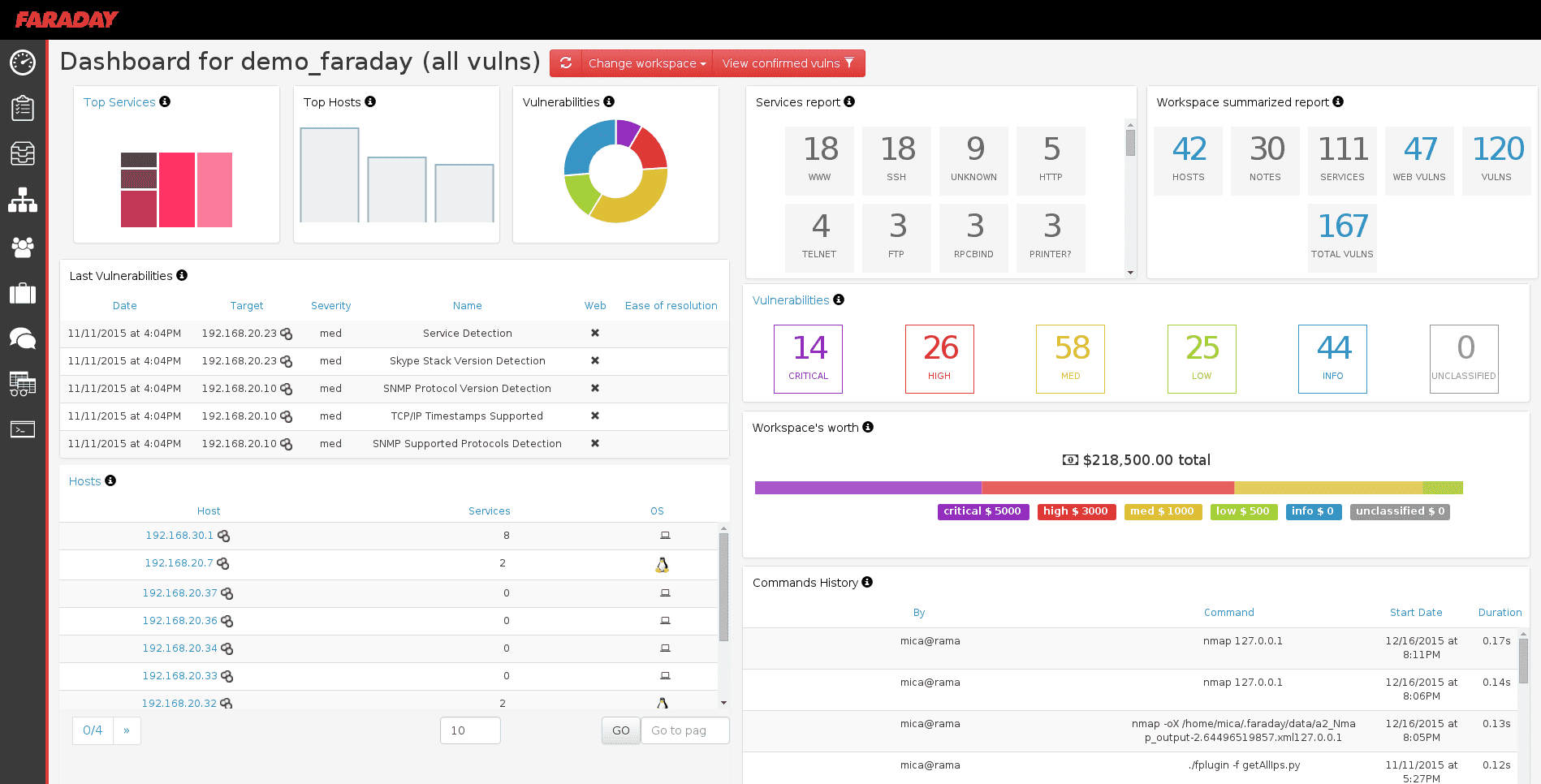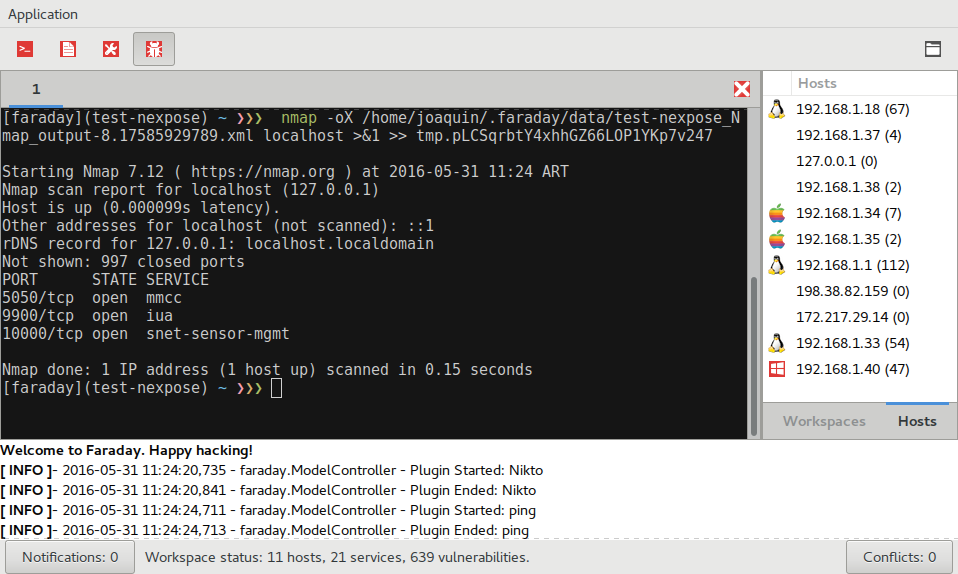Faraday introduces a new concept, IPE (Integrated Penetration-Test Environment). A multi-test Penetration testing IDE designed to distribute, index and analyze the data generated during a control security.

Faraday's main purpose is to reuse the available tools of his community and to use them in a complex way.
Designed with simplicity, users do not notice any difference between their own terminal application and that included in Faraday.
It was developed with a specialized set of functions that help users to improve their own work. Faraday does the same thing to the IDE for you when planning, but from the perspective of a Penetration testing.
Faraday works flawlessly, it currently has more than 50 tools, including the most popular Penetration testing platforms:

There are 3 types of plugins:
- Plugin that monitors commands, giving direct commands when a vulnerability is detected on the console. Do the whole process automatically and no action is required from you.
- Plugins that import file references. You need to copy the report to $HOME/.faraday/report/[workspacename] (replacing [workspacename] with the actual space name work your) and Faraday will automatically detect, process and add it to the HostTree.
- Plugin for local or internet connections (BeEF, Metasploit, Burp), connected to external APIs or databases or connected directly to Faraday RPC API.
Application snapshots


The program comes pre-installed on penetration testing distributions such as Kali or you can alternatively download it from here





